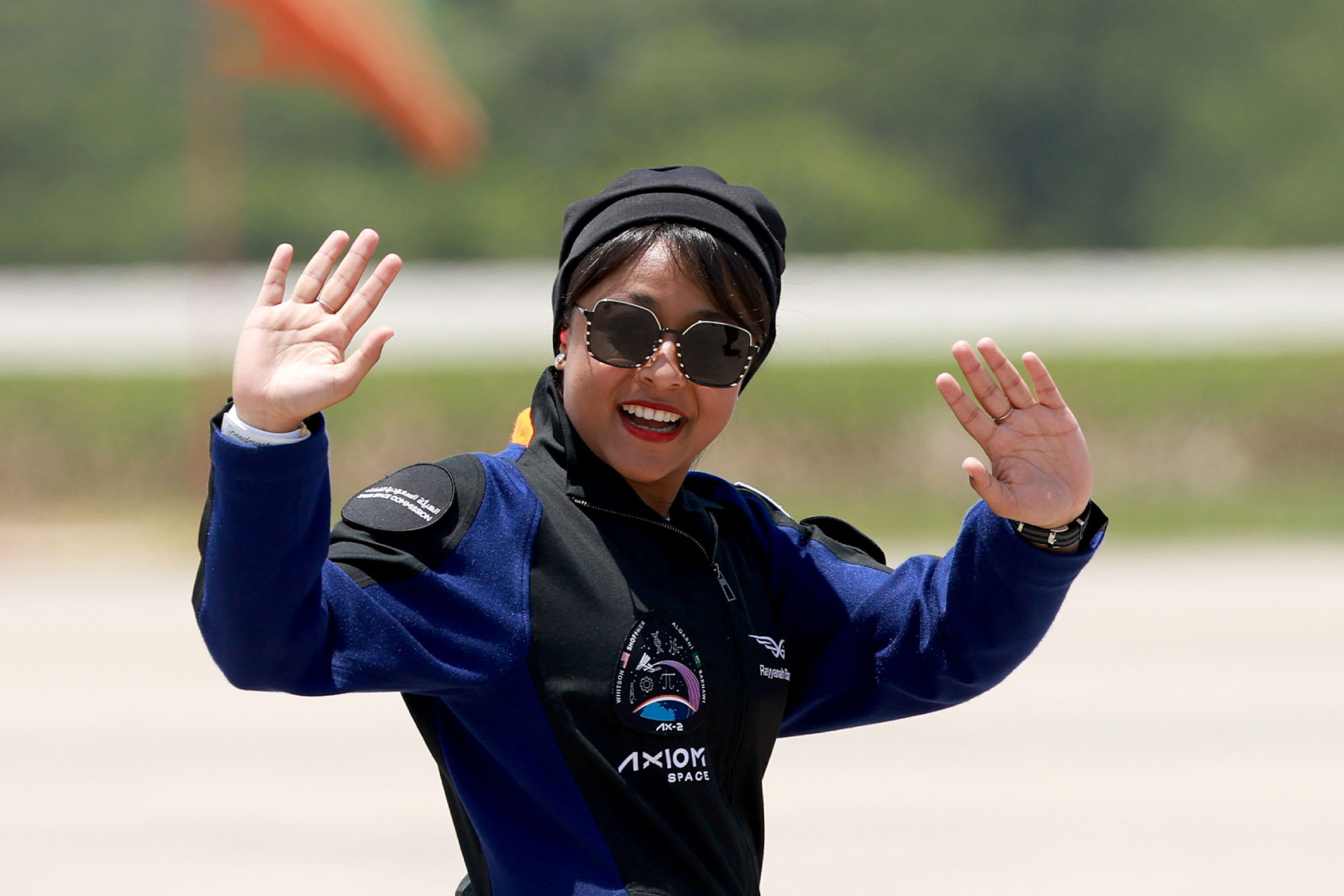When Mission Specialist Rayyanah Barnawi docked to the space-facing port of the Harmony module on Monday, she became the first Saudi Arabian woman to board the International Space Station. Barnawi, a scientist specializing in cancer stem cell research, is one of four all-private crew members on SpaceX‘s Axiom Mission 2 (Ax-2).
“This is a dream come true for everyone,” Barnawi said before the flight. “Just being able to understand that this is possible… If me and Ali can do it, then they can do it, too.”
Ali, as Barnawi calls him, is fellow Saudi Mission Specialist Ali Al Qarni, an F-15 Strike Eagle fighter pilot for Royal Saudi Air Force. Though the mission’s full cost has remains undisclosed so far, previous seats came with a price tag of $55 million, according to the Washington Post. Sponsored by their home country, they will be Saudi Arabia’s first two astronauts to join the International Space Station (ISS). The ISS is a marvel of scientific and technological prowess but also serves as a beacon of international cooperation, often demonstrating how nations can cooperate on issues of global importance.
Barnawi gave an audio report on her first moments among the stars, as captured in a tweet from Reuters.
“It feels amazing to be viewing earth from this capsule,” Barnawi said. “To the people around the world: The future is very bright. And I’d like you to dream big, believe in yourself, and believe in the future of humanity.”
“The sky is no limit to our ambition. It is only the beginning,” Barnawi wrote in a video tweet from the station.
With the four new arrivals, the ISS now holds 11 crew members — including United Arab Emirates astronaut Sultan Al Neyedi, who in April became the first Arab astronaut to complete a spacewalk. Al Neyedi is the fourth Arab astronaut to reach space, a legacy dating back to 1985 with Saudi citizen and Discovery shuttle specialist Prince Sultan bin Salman Al Saud, the first Arab and first Muslim astronaut in space. Saudi Arabian astronauts haven’t returned to space since Discovery — at least, not until Sunday.
“For the first time ever,” Al Neyedi tweeted from aboard the ISS’s orbiting outpost, “three Arab astronauts will be in space together.”
Following in Prince Sultan bin Salman Al Saud's pioneering footsteps, 2 Saudi astronauts will launch on their 1st mission to the ISS and for 1st time ever, 3 Arab astronauts will be in space together. As we wish them a great launch, here's a recent view of Saudi Arabia 🇸🇦 I took. pic.twitter.com/T33R59iA10
— Sultan AlNeyadi (@Astro_Alneyadi) May 21, 2023
However, as The National’s Sarwat Nasir pointed out, Egypt’s Sara Sabry could potentially be considered the first Arab woman in space. Although Barnawi is currently about 408 km (254 miles) above the earth in the ISS, last year Sabry launched on one of Blue Origin’s suborbital rocket flights, which reach about 100 km (60 miles) above sea level — where NASA says space is roughly considered to begin. By comparison, Ax-2’s initial orbit was about 125 miles above earth.
Debuting the new Falcon 9 booster, Ax-2 is SpaceX’s 10th human spaceflight mission for SpaceX, and the second ISS-bound mission for Houston-based Axiom Space. During their eight-day mission, Barnawi said the team are working on at least 20 experiments — 14 of which are being led by Saudi scientists — ranging from immune-cell biology research to cloud seeding in microgravity.
“For the first time ever, three Arab astronauts will be in space together.”
Along with the Saudi mission specialists, Ax-2 includes American racecar driver and businessman John Schoffner, the vessel’s private-paying pilot. And Ax-2’s commander is none other than space legend Peggy Whitson, the first woman to command the ISS (doing so twice) and NASA’s first female chief astronaut. Whitson has more space walks under her tethered belt than any other woman — and at 63, she holds the record for oldest woman to orbit the earth.
Whitson’s Sunday launch marked her first ride with Axiom Space following her 2018 retirement from NASA, and her fourth space mission overall. Her third mission in 2016, a nearly 10 month stay on the ISS, marked Whitson as the American with the most time in space. True to form, Whitson also became the first female commander of a private spaceflight Sunday.
“Welcome home to zero-G, Peggy,” said SpaceX Chief Engineer Bill Gerstenmeier when the crew reached orbit. Whitson called it a “phenomenal ride.”
“There are so many lessons learned after being up in space for 665 days,” Whitson said in a recent interview with Spaceflight Now. “I’ve got one or two lessons I’ve maybe learned the hard way, and I’m trying to save them some time because our mission is relatively short. So we want to make sure we get the most out of every one of those days.”
Ax-2 crew will depart the ISS on May 30, aiming for a Florida splashdown two days sooner than originally planned, in order to free up the station’s docking port ahead of for SpaceX’s Jun. 3 unpiloted re-supply mission. Another NASA-contracted SpaceX flight is slated to launch in August.

